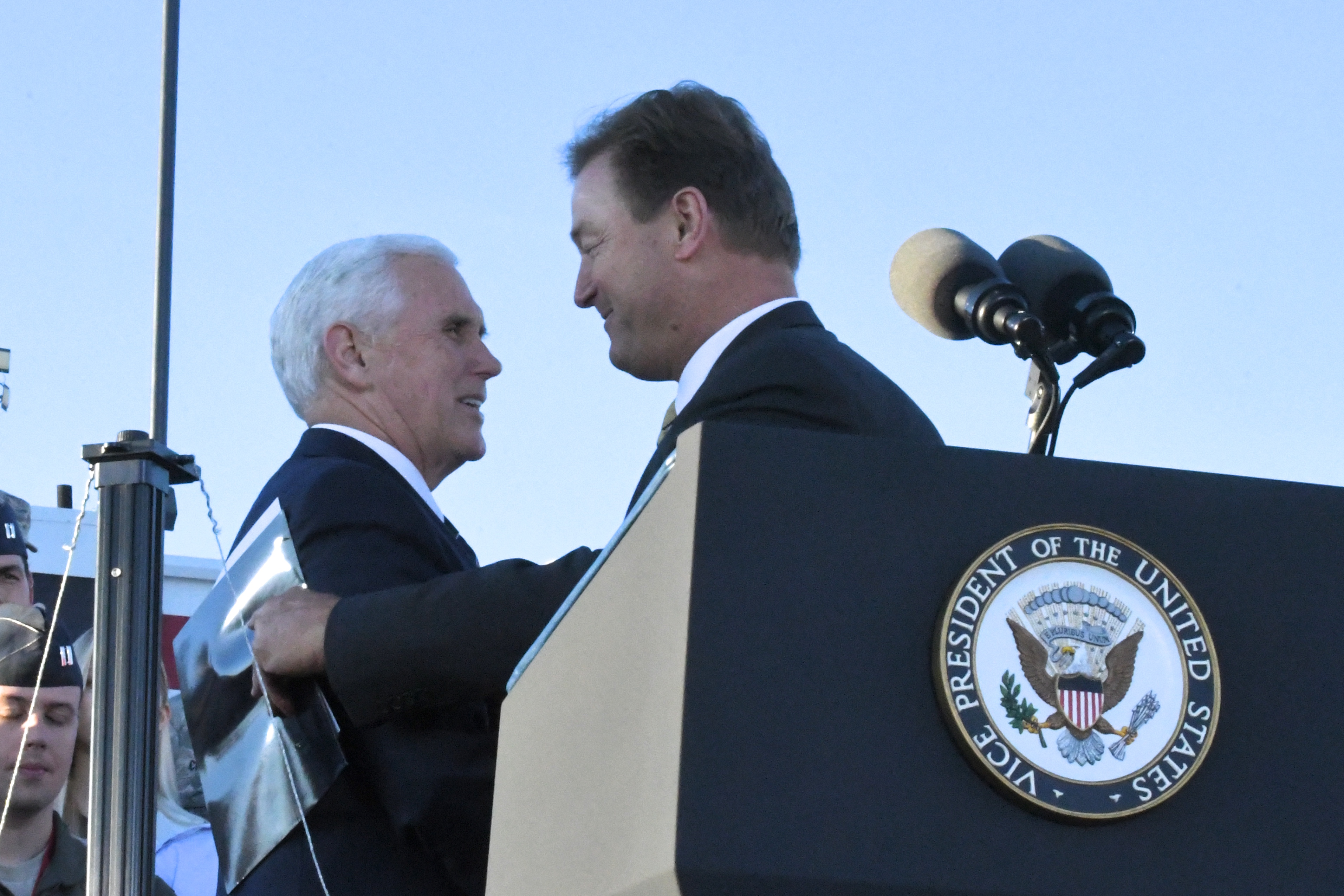Follow the Money: Rosen propelled by out-of-state small-dollar donors, Heller sustained by out-of-state max donations

By Jeremy Marsh
Both of Nevada’s top U.S. Senate candidates raised substantial amounts of money from out-of-state donors during the first months of 2018, according to an analysis of first quarter FEC reports by The Nevada Independent.
While the top-line fundraising results have been well-known since the April 15 reporting deadline, it’s difficult to do an in-depth analysis of campaign finance reports submitted by U.S. Senate candidates because they are exempted from electronically filing their reports to the FEC. However, once the files were manually transcribed by the FEC, candidate fundraising and spending could be scrutinized in greater detail.
From January to the end of March 2018, incumbent U.S. Sen. Dean Heller raised just over $1.1 million in out-of-state money, mostly in the form of high-dollar donations, while Rep. Jacky Rosen hauled in almost $2.6 million from predominantly small-dollar donors around the country.
Rosen’s fundraising total, the second best among Democratic Senate challengers nationwide for the first reporting period of 2018, was fueled by an average itemized donation of $281.
Per campaign finance regulations, donations must be itemized if they are over $200. However, because of Rosen’s reliance on digital fundraising tools like ActBlue, many of her small-dollar donations were also itemized.
Itemized donations made up 67 percent of Rosen’s first quarter fundraising, while unitemized donations accounted for 26 percent. Donations from PACs were 7 percent of Rosen’s receipts.
Heller raised 63 percent of first quarter fundraising from itemized donations, with an average contribution of $868. PACs contributed 28 percent of Heller’s haul, while small-dollar unitemized donations were 9 percent of his total donations.
The analysis revealed that 78 percent of Heller’s itemized total came from donations of $2,700, the maximum allowed donation for one election per federal regulations. Maximum allowed donations accounted for 40 percent of Rosen’s first quarter itemized contributions.
While their first quarter totals differed in size and composition, both candidates relied heavily on out-of-state donors to fill their campaign coffers.
Rosen raised 86 percent of her itemized donations from out-of-state, while Heller raked in 83 percent from non-Nevada donors.
Rosen’s best fundraising state was California, where she pulled in almost $400,000, good for 26 percent of her total. New York placed second, where nearly 20 percent of her quarterly haul came from (just over $300,000).
Her other top state was Nevada with $210,515 (representing 14 percent of her overall total). Maryland and Massachusetts rounded out the top five, each with about 5 percent of her first quarter itemized total.
Rosen’s top five cities for fundraising, in order, were New York, New York; Las Vegas, Nevada; San Francisco, California; Los Angeles, California; and Washington, D.C.
In April, the National Republican Senate Committee criticized Rosen in a press release for attending “another Hollywood fundraiser.” NRSC spokesperson Michael McAdams nicknamed Rosen “Hanoi Jacky” for her planned appearance with actress and anti-Vietnam war activist Jane Fonda. Per Rosen’s campaign, Fonda did not end up attending the event.
Although Heller raised a similar proportion from out-of-state compared to Rosen, his best fundraising state was Nevada, with its donors contributing just over $117,000 in the first quarter, about 17 percent of his itemized total.
He raised $78,435 from California donors, the second most from any state and about 12 percent of his haul. Nearby Arizona came in third, with its $68,050 representing 10 percent of his contributions. Minnesota and Florida were fourth and fifth respectively, making up 9 percent and 8 percent of his first quarter itemized total.
Heller’s top five cities for fundraising in the first quarter were, in order, Las Vegas, Nevada; New York, New York; Minneapolis, Minnesota; Reno, Nevada; and wealthy Phoenix suburb Paradise Valley, Arizona.
Besides details about fundraising, the quarterly FEC report also provides information regarding candidate expenses. The Nevada Independent reviewed and categorized each major Senate candidate’s Q1 spending.
Despite Rosen raising over double the amount of Heller to start 2018, her campaign only spent about $90,000 more than Heller’s.
Of the $1,074,672 Rosen spent in the first quarter, $382,456 went towards salary and payroll for her staff, about 36 percent of her expenses. Other major categories of spending were shipping and printing, accounting for almost 17 percent of spending, and list acquisition, about 15 percent of first quarter costs.
The Heller campaign spent $987,326.48 from January 1 to March 31, 2018. Media and advertising was the largest cost, with 36 percent of its spending, $350,314, allocated to these purchases. Almost 17 percent went to hiring consultants and just over 11 percent to salary and payroll.
On May 21, the Democratic Senate Campaign Committee criticized Heller in a press release for paying Heller Enterprises LLC, a company whose only employee is his son Harrison Heller, at least $50,000 over the past two years for digital media consulting.
DSCC spokesperson David Bergstein said the payments, first reported by the Reno Gazette-Journal, “shouldn’t come as a surprise – for the past year Senator Heller has been more focused on running for re-election than actually doing his job and working for Nevadans.”
The next FEC quarterly reporting period runs from April 1 to June 30, 2018, but candidates will be required to file pre-primary reports before the state's primary election. The second quarter reports are due by July 15.
Jeremy Marsh is a student at George Washington University.
Correction: Updated at 10:36 a.m. to include that candidates still need to file pre-primary reports with the FEC.
